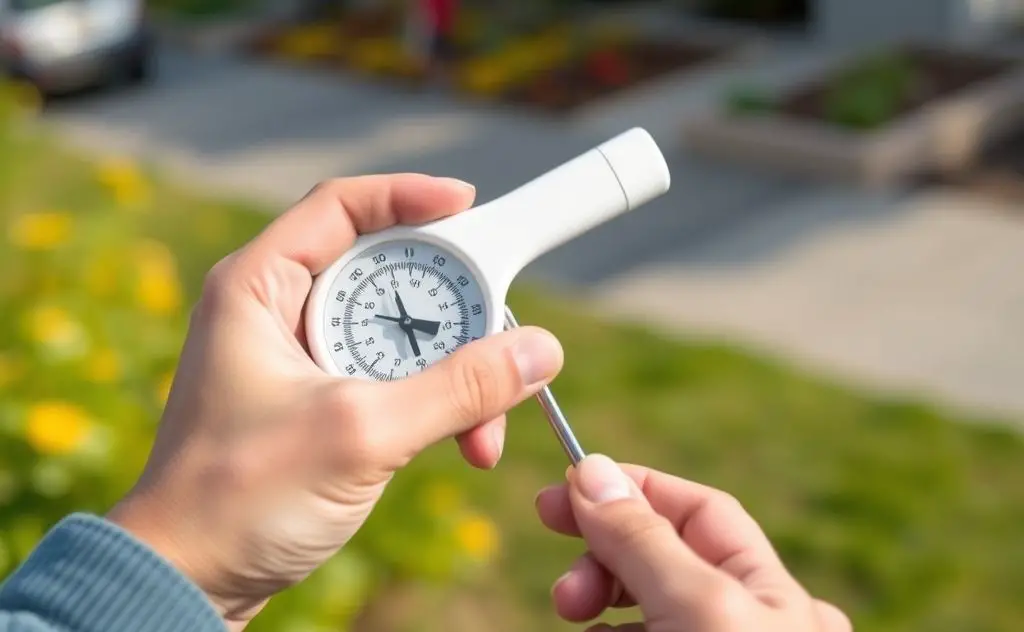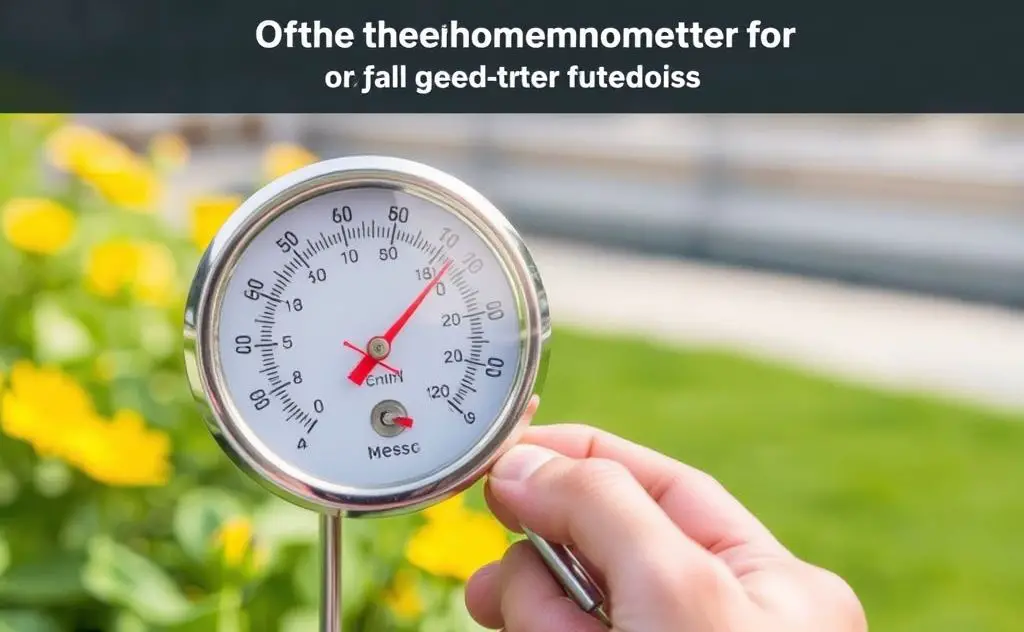To measure outdoor temperature, place the thermometer in a shaded area away from direct sunlight and wind for an accurate reading.
Getting precise outdoor temperature measurements requires more than just hanging a thermometer outside. Proper placement, maintenance, and understanding your device’s capabilities all impact accuracy. This guide covers everything from ideal mounting locations to advanced digital features.

Choosing the Right Outdoor Thermometer
Selecting the proper thermometer is the first step toward accurate readings:
- Analog vs. digital: Traditional liquid-filled thermometers are reliable but lack features. Digital models offer remote monitoring and historical data.
- Wireless range: Many digital units like the AcuRite Digital Thermometer support sensors up to 330 feet away.
- Weather resistance: Look for waterproof ratings if placing sensors exposed to elements.
Specialized Thermometer Types
| Type | Best For | Accuracy |
|---|---|---|
| Bimetallic | Basic temperature checks | ±2°F |
| Infrared | Instant surface readings | ±1°F |
| Thermocouple | Scientific applications | ±0.5°F |

Optimal Thermometer Placement
Where you position your thermometer dramatically affects readings. Follow these guidelines:
Height Requirements
Mount sensors 4-6 feet above ground. This elevation:
- Avoids ground radiation effects
- Minimizes radiative cooling
- Matches official weather station standards
Sun Protection
Always place thermometers in shaded areas. Direct sunlight can cause errors up to 15°F. Consider:
- North-facing walls (in northern hemisphere)
- Under eaves or porches
- In a properly ventilated shelter
Avoiding Heat Sources
Keep sensors at least 15 feet from:
- HVAC vents
- Grills or outdoor kitchens
- Paved surfaces (asphalt radiates heat)
- Windows reflecting sunlight
Installation Best Practices
Mounting Methods
Secure your thermometer properly:
- Use white-painted wood posts to minimize heat absorption
- Mount on freestanding poles rather than house walls
- Ensure adequate airflow around the sensor
Weatherproofing
Protect your investment:
- Apply silicone sealant to digital sensor seams
- Use radiation shields in sunny climates
- Consider protective enclosures for harsh environments
Maintaining Accuracy
Calibration Techniques
Verify your thermometer’s precision:
- Compare with a known-accurate reference thermometer
- Use ice water (32°F/0°C) and boiling water (212°F/100°C) tests
- Adjust digital models per manufacturer instructions
Seasonal Adjustments
Adapt to changing conditions:
- Clear snow accumulation from sensors
- Check for spider webs in shelters
- Replace batteries before winter (lithium recommended for cold)
Advanced Features of Digital Thermometers
Modern units offer capabilities beyond basic temperature:
- Multi-sensor systems: Monitor multiple locations simultaneously
- Historical tracking: Record high/low temperatures over time
- Smart connectivity: Receive alerts and view data remotely
- Weather forecasting: Some models predict conditions based on trends
For specialized applications like pool temperature monitoring, consider solar-powered pool heaters with integrated thermostats.
Troubleshooting Common Issues
Inconsistent Readings
If temperatures fluctuate abnormally:
- Check for nearby heat sources
- Verify proper ventilation
- Replace old batteries in digital units
Wireless Connection Problems
For digital models with connectivity issues:
- Reduce distance between display and sensor
- Remove potential interference (metal objects, electronics)
- Reposition antenna if equipped
By following these guidelines and regularly maintaining your equipment, you’ll achieve professional-grade temperature measurements for gardening, weather tracking, or simply deciding when to wear a jacket.
